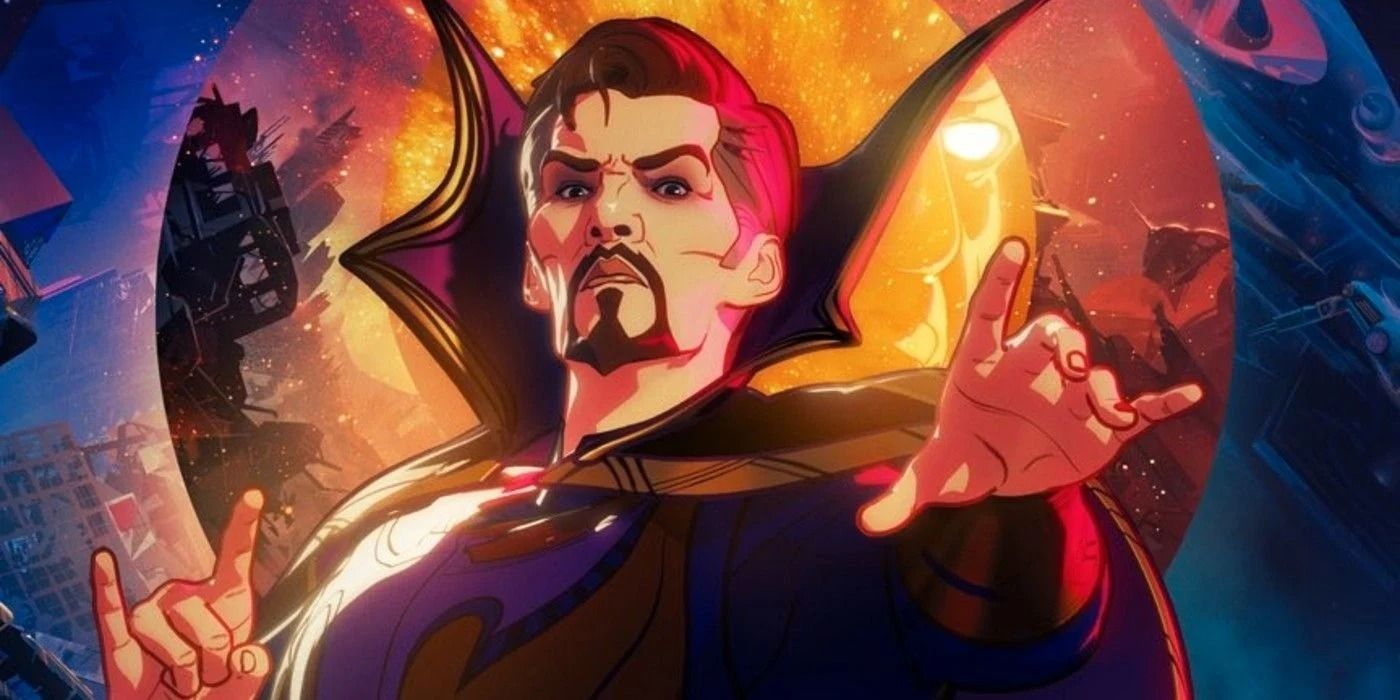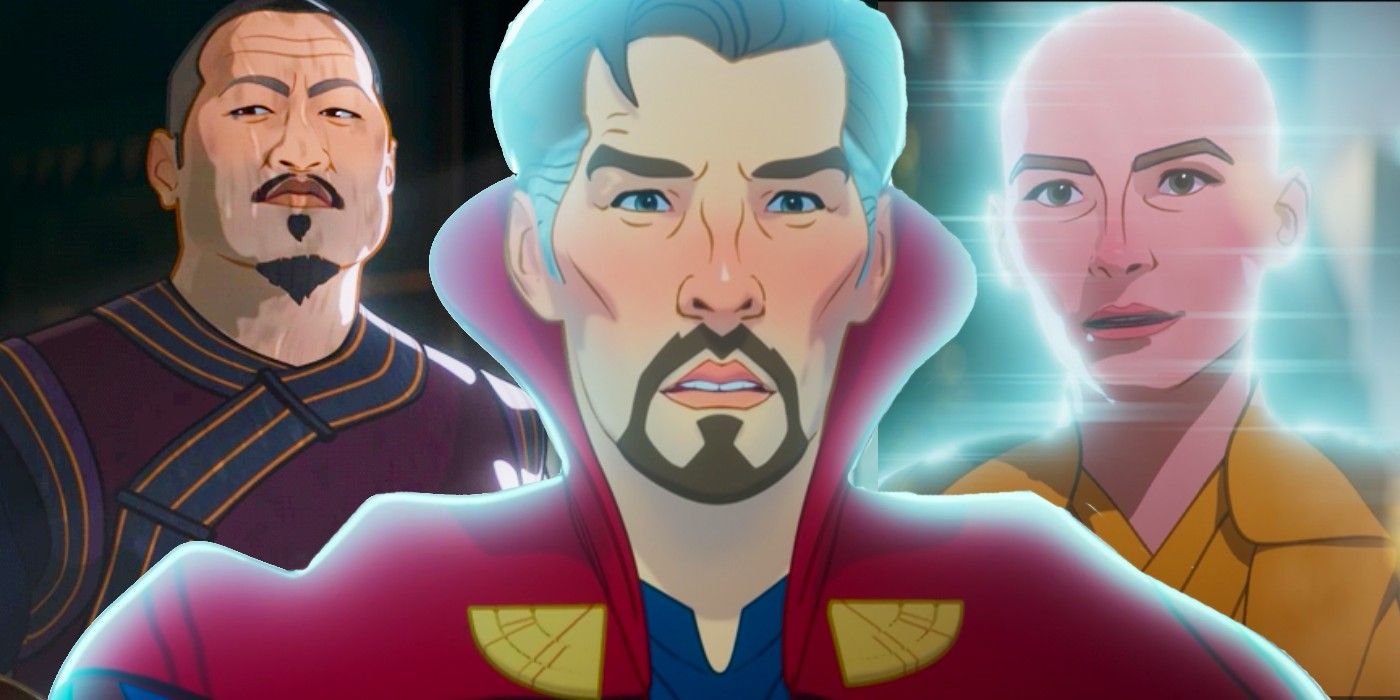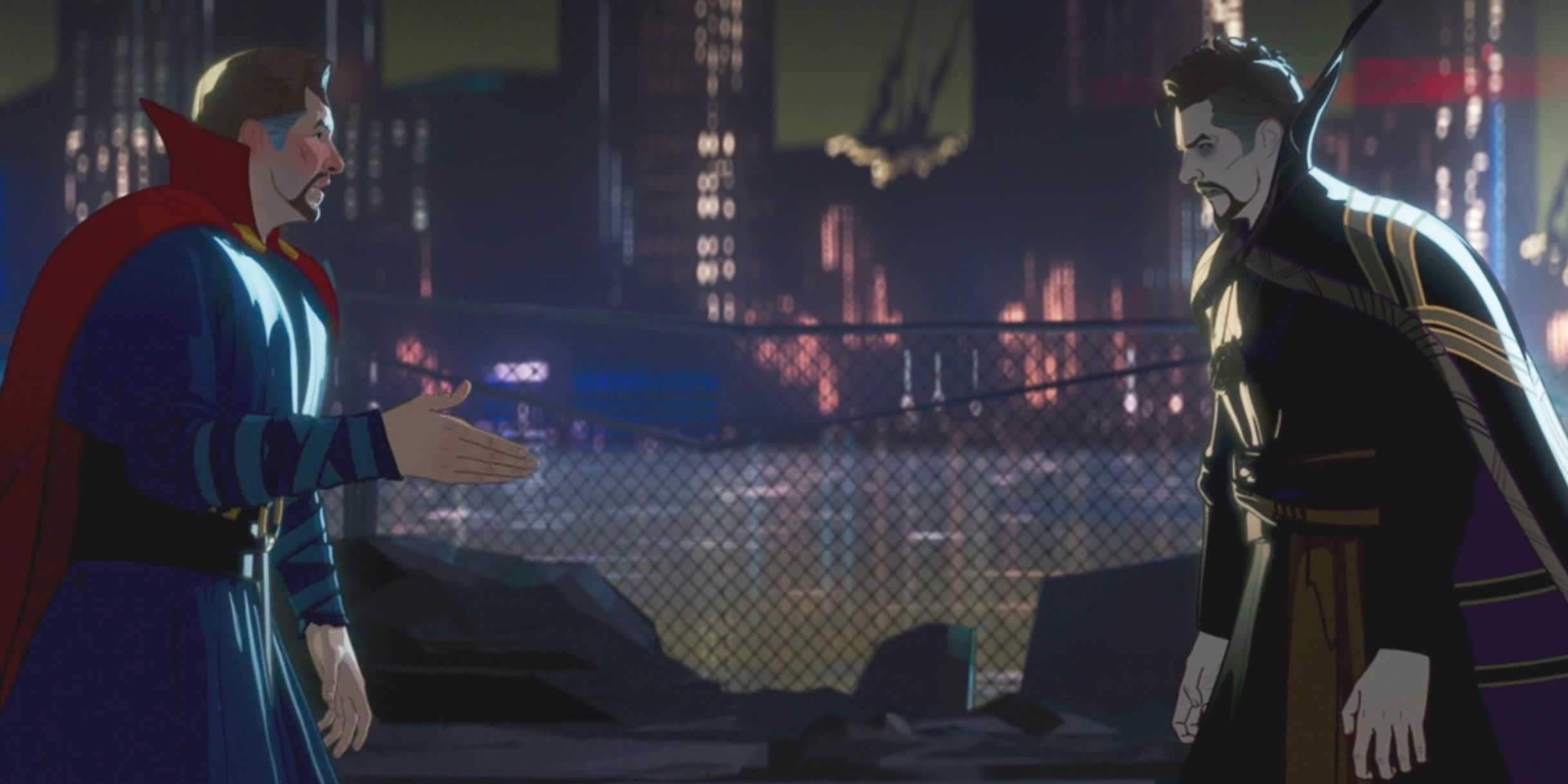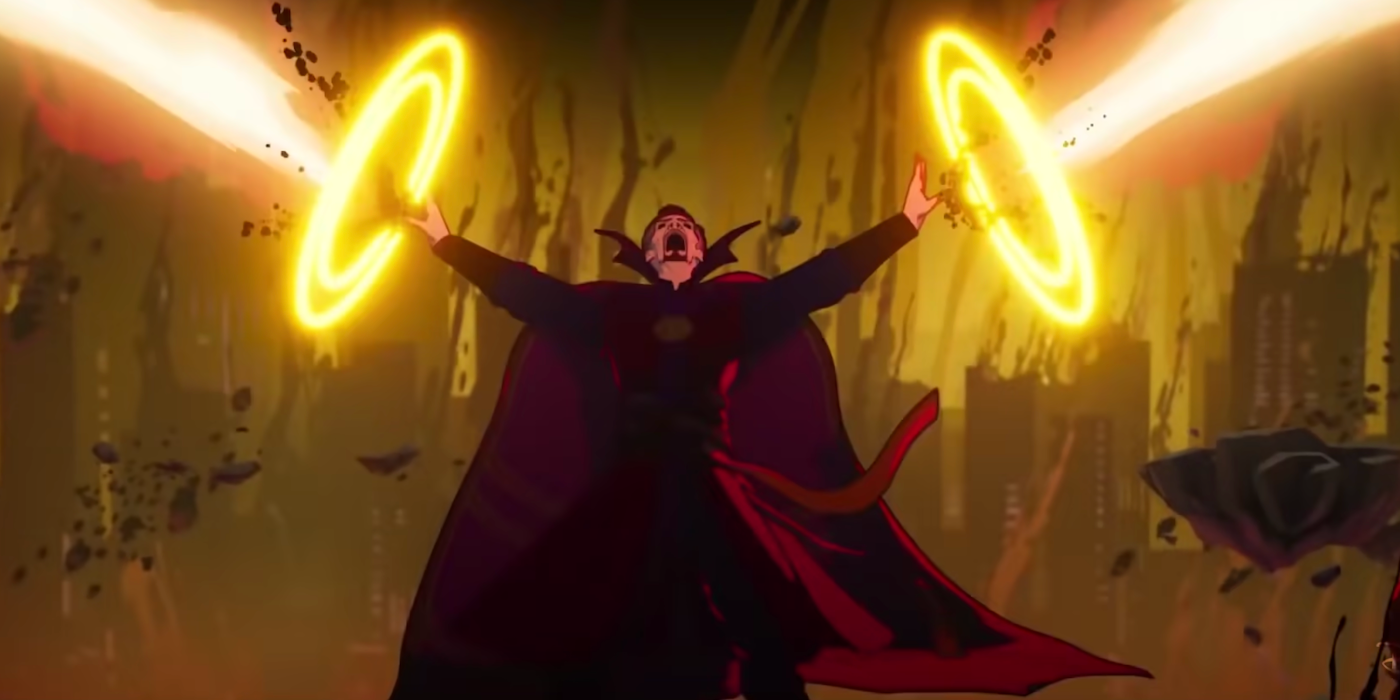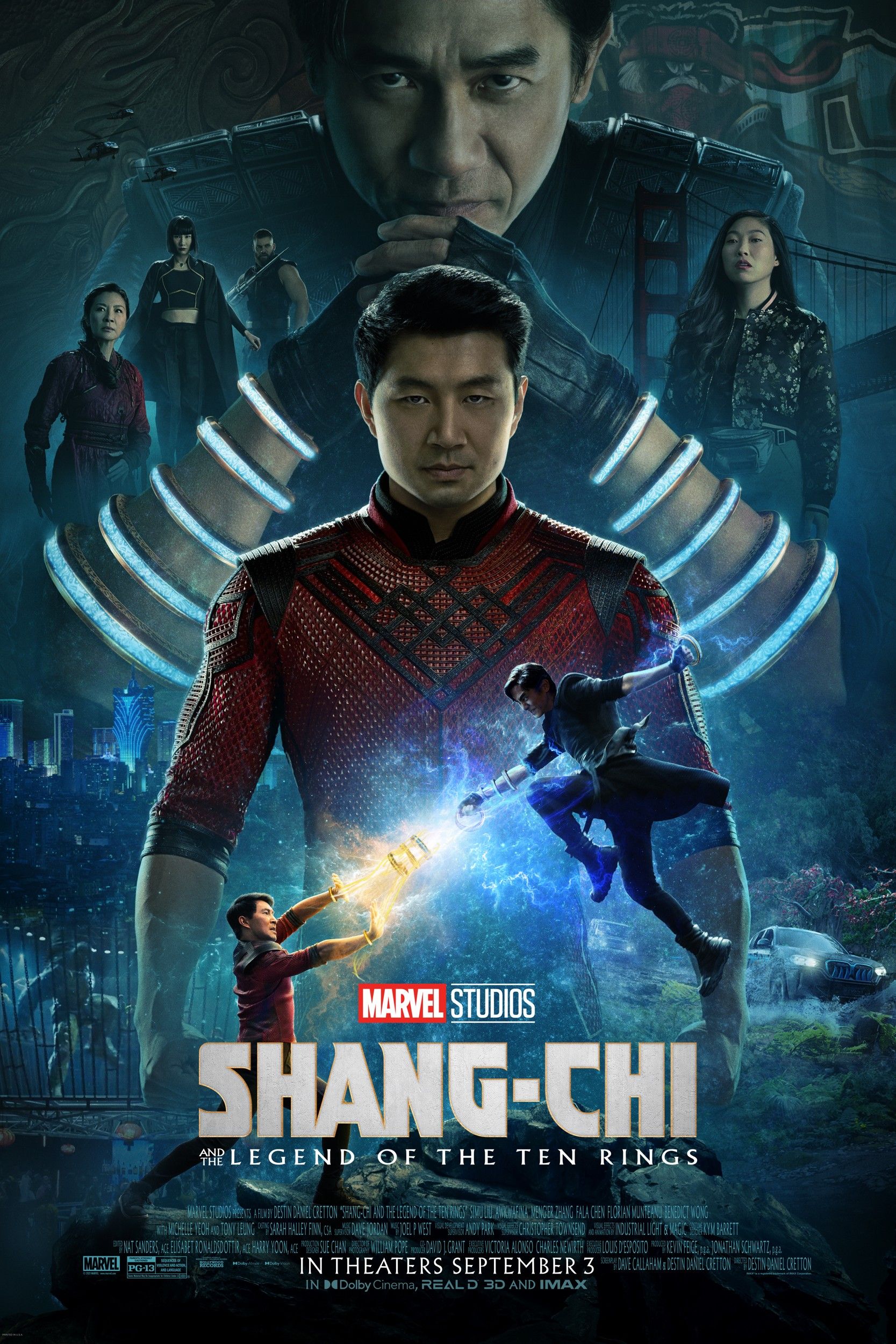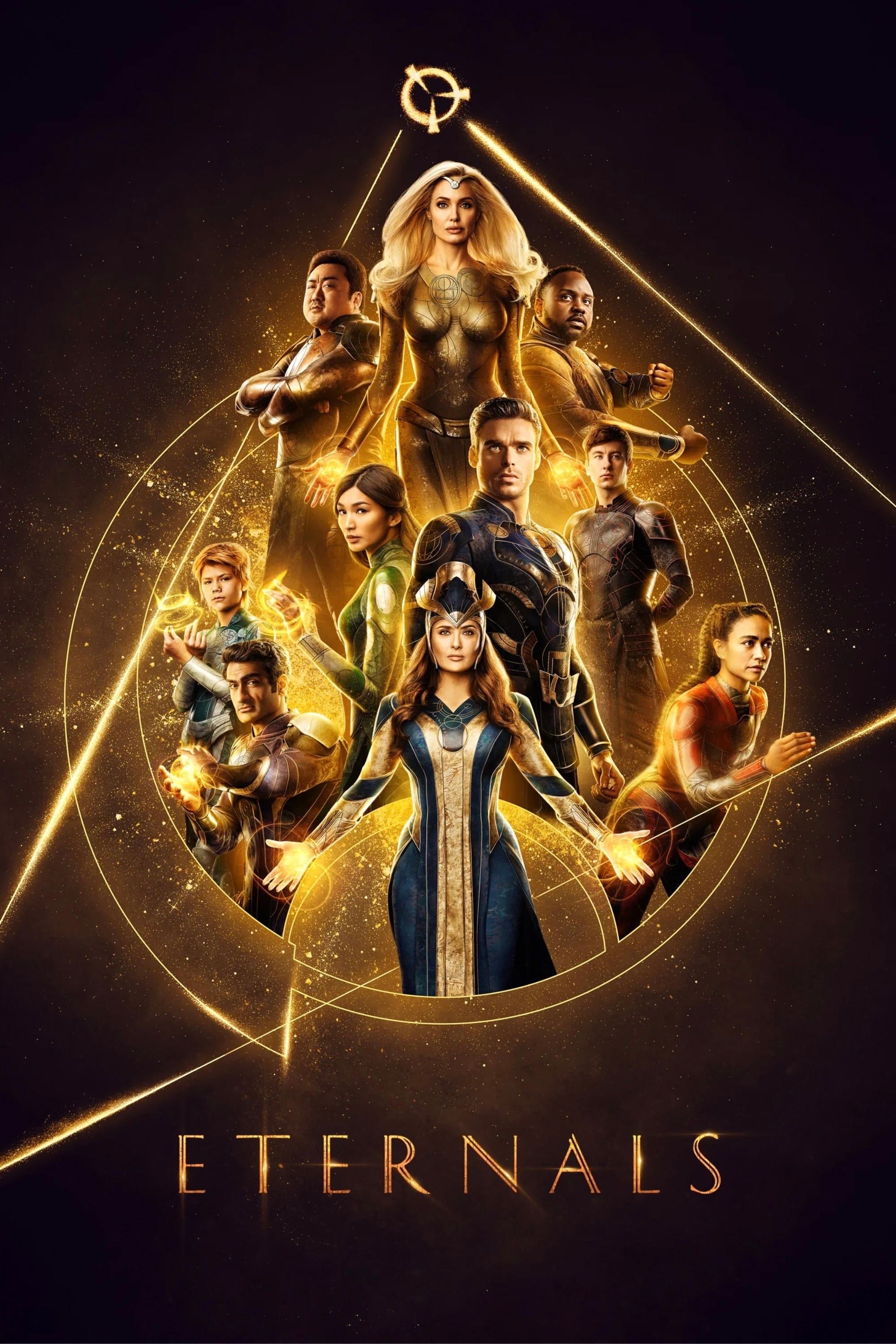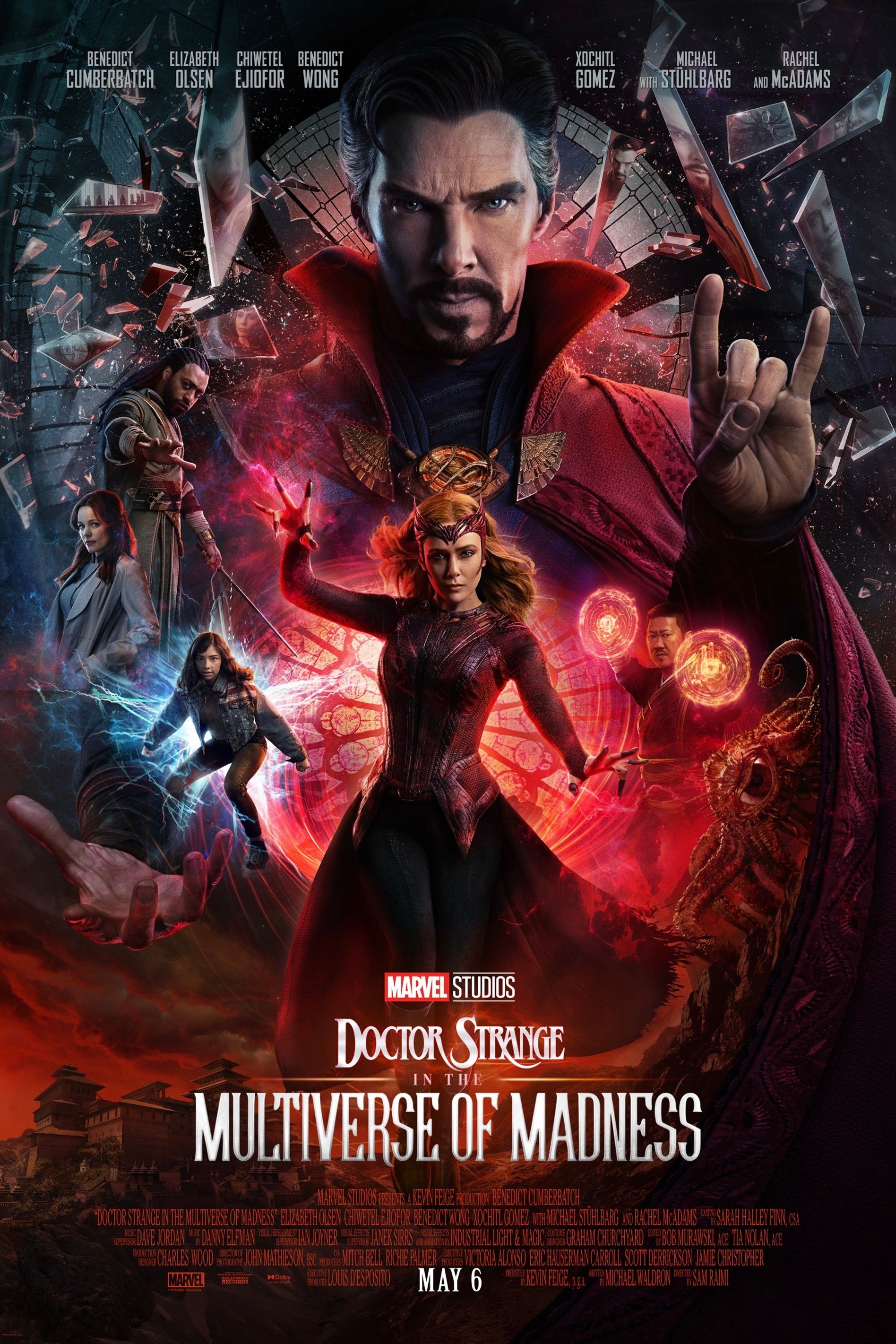Warning: Contains spoilers for Marvel’s What If…? episode 4.
Marvel’s What If…? episode 4 takes a much darker turn than the Disney+ series’ previous episodes, ending with Doctor Strange destroying an alternate universe after becoming obsessed with changing the timeline. It’s a wild look at the possibilities and limits of the new MCU multiverse, which reveals that while infinite timelines are possible, there are some things within universes that cannot be changed. Of course, Strange attempts to change those things anyway in What If…? episode 4, ultimately ending with the collapse of his entire reality.
The first three episodes of What If…? dealt with changes to the Sacred Timeline that seemed, overall, pretty significant – Peggy Carter receiving the super-soldier serum instead of Steve Rogers, T’Challa becoming Star-Lord after being abducted by Yondu, and a vindictive Hank Pym assassinating several original Avengers after his daughter’s death. But in the face of the show’s fourth episode, “What If… Doctor Strange Lost His Heart Instead of His Hands?”, the changes are far more dramatic. Overwhelmed by grief after losing his lover Christine Palmer, Strange goes on a journey to attain enough power to change history, altering what the Ancient One calls an “absolute point in time.” For all his strength and drive, however, that plan only ends in widespread destruction and death.
To tell that story, however, What If…? episode 4 makes some big additions to the MCU’s existing multiverse lore, explaining new details and changing some old ones about how diverging realities and time travel actually work. It’s a lot of exposition packed into a relatively short story, but it’s all essential to understanding what Doctor Strange actually does and how it works. Here’s what really goes down at the end of What If…? episode 4, and why the universe is destroyed.
How Does Doctor Strange Become So Powerful?
After training in the mystic arts in What If…? episode 4’s alternate universe, Doctor Strange begins attempting to change his tragic past, using the Time Stone to travel back to the night of Christine’s death and trying to save her. His efforts are ultimately to no avail, however, as she continues to die over and over in various and equally gruesome ways. Eventually, the Ancient One appears to Strange to tell him that her death cannot be undone, as it is an absolute point in that universe’s timeline – an event that is so pivotal to so many other things, that it will stand firm regardless of temporal meddling.
That sends Strange on his quest to become stronger, with the ultimate end goal of being capable of undoing an absolute point. The texts he discovers say that the only way to gain that sort of power is to absorb the strength of various mystical creatures, and after centuries of doing this, Doctor Strange attains near godlike powers. The episode doesn’t spend a ton of time explaining how exactly his augmentations allow him greater control over time, but the idea seems to be that enough sheer mystical energy – something that the creatures he absorbs are rich in – can push a sorcerer past the typical limits of magic. At the end of the episode, it’s shown that Strange becomes capable of manipulating specifics moments in time to exact specifications, as he’s able to undo the damage to his car and Christine’s body without affecting any of the world around it. It’s not enough, however, as his unmatched power ends up tearing the very fabric of his universe apart.
What If…?’s Two Doctor Stranges Explained
Near the end of Marvel’s What If…? episode 4, the Ancient One reveals that she split Strange into two halves in an attempt to stop him from destroying the universe. She says she used immense dark power to effectively channel two of his potential timelines into the same universe, thereby restricting the power of the evil Strange. It’s a confusing idea, as the MCU has spent a lot of time previously explaining that any nexus events cause new branches in the timeline. The only real explanation for how two of Strange’s variants can coexist in the same universe is the Ancient One’s blanket invocation of dark magic – an overly convenient and questionable twist, but still enough to explain it for the purposes of the show.
So how does Strange’s split actually play into the episode’s ending? It’s all dealt with pretty quickly, but it seems that no matter how many creatures the evil Doctor Strange absorbed, he couldn’t reach his true potential without first reclaiming the part of himself that was split. That makes sense since, as the Sorcerer Supreme, Doctor Strange would be the person with the most direct control over Earth’s magical energy. But when split in two, it would be impossible for him to have full control, as his other self could effectively negate his own mystical influence. That’s why it’s only after evil Strange absorbs the other Strange that he’s finally able to bring Christine back.
Why The Universe Is Destroyed In What If…? Episode 4
Even before the two Doctor Stranges merge at the end of What If…? episode 4, the universe has already started to collapse. The very fabric of reality seems to be slowly vaporizing in response to the evil Strange’s meddling. Unfortunately, the episode doesn’t really offer much explanation as to why or how that unraveling actually works. The basic gist is that universes are built around absolute points – moments in time that act as a skeleton around which the rest of time and reality can be somewhat altered. Altering any of those absolute points means dismantling the skeleton, causing the entire universe to collapse. Evil Strange starts the apocalypse simply by attaining enough to power to freeze time, but the universe doesn’t fully end until he reabsorbs his other self. Seeing what he’s wrought, Strange even implores the Uatu, the Watcher – who he’s become powerful enough to see – to save his universe from his folly. The Watcher refuses, however, staying true to his name.
Since Christine survives in the original MCU timeline, it’s clear that absolute points are only such in distinct timelines. Other universes would have other absolute points that define their own nature, presumably, creating a distinction between the different branches of the multiverse. It’s even possible that Strange’s various attempts to save Christine each yielded new branches of their own. As Marvel continues to flesh out the rules of the MCU multiverse and alternate timelines, how it works may continue to be somewhat confusing. But if Marvel's What If…? episode 4 has proved one thing definitively, it’s that there are some things in the MCU that no amount of power can stop or change.
Marvel's What If...? releases new episodes Wednesdays on Disney+.

